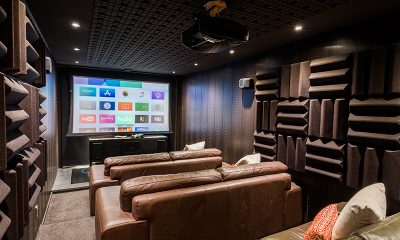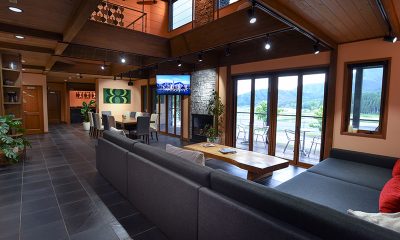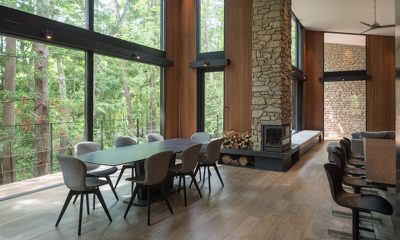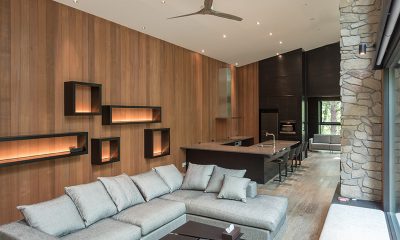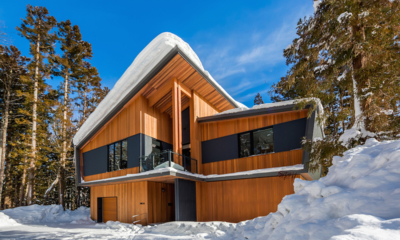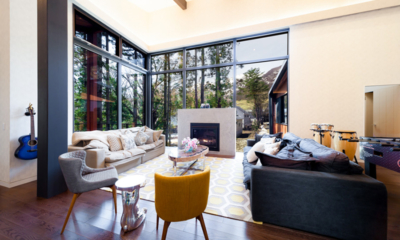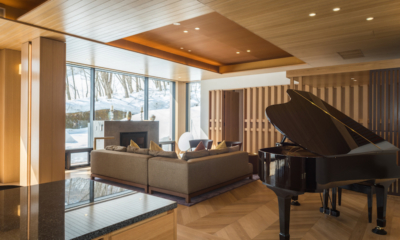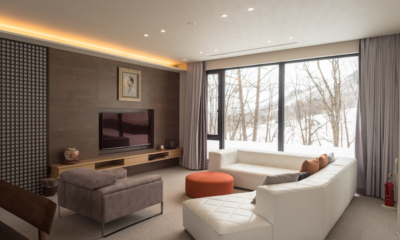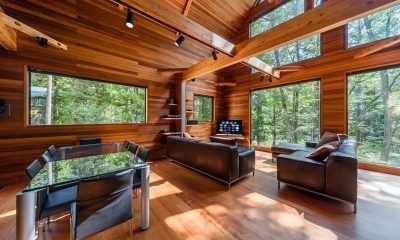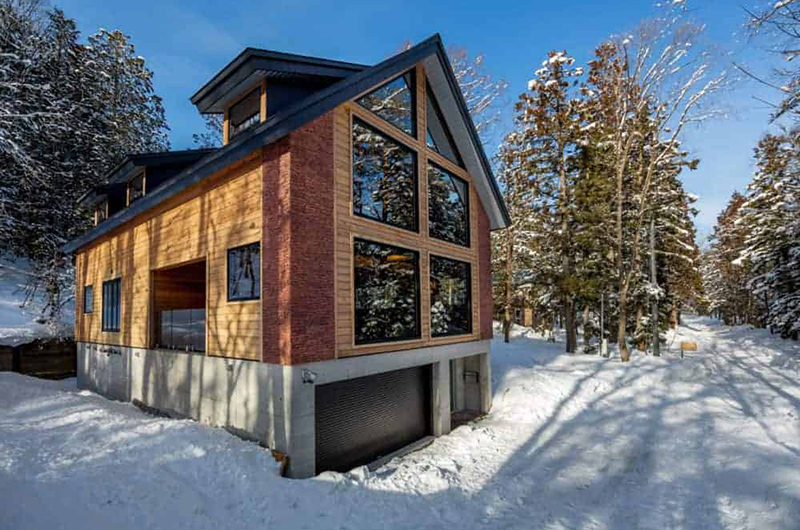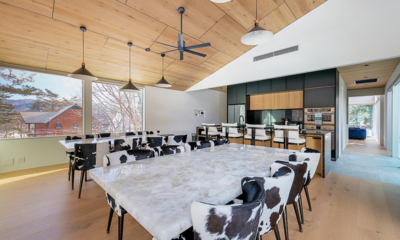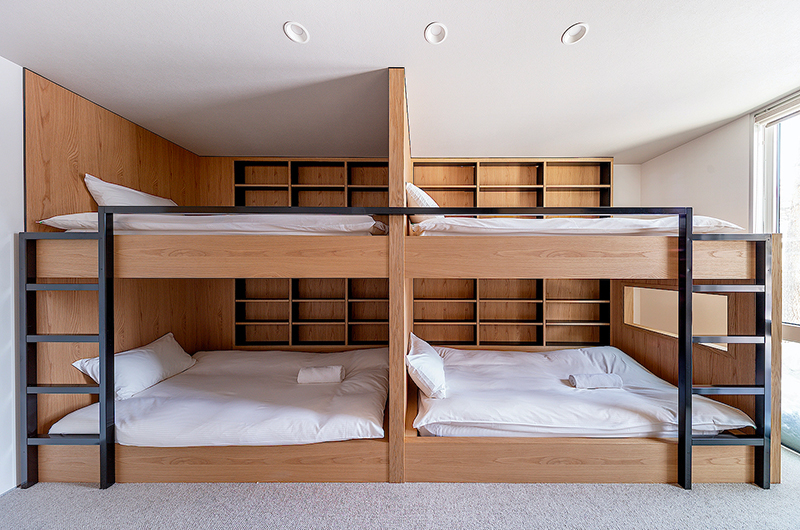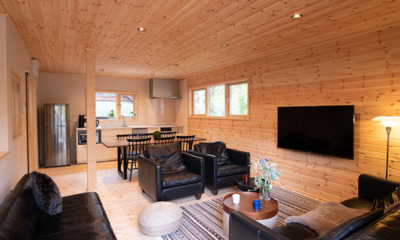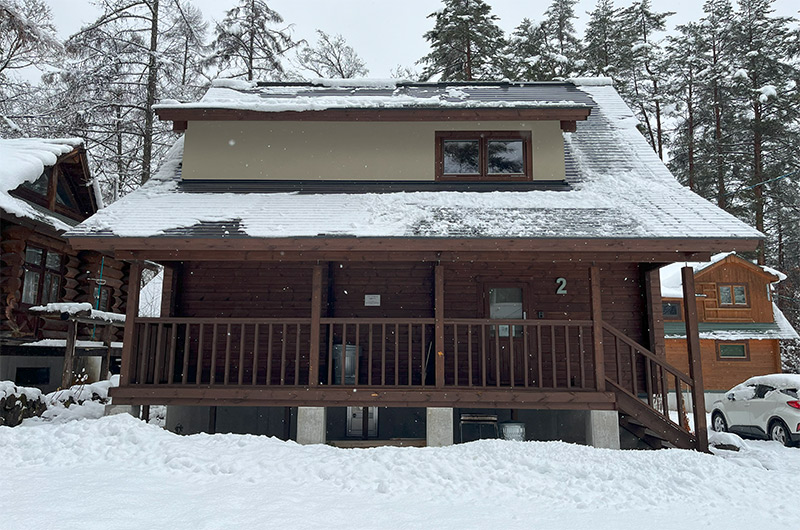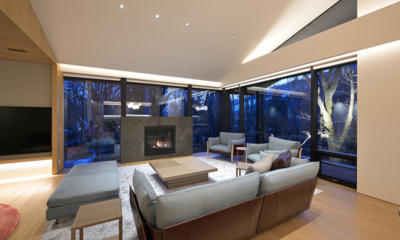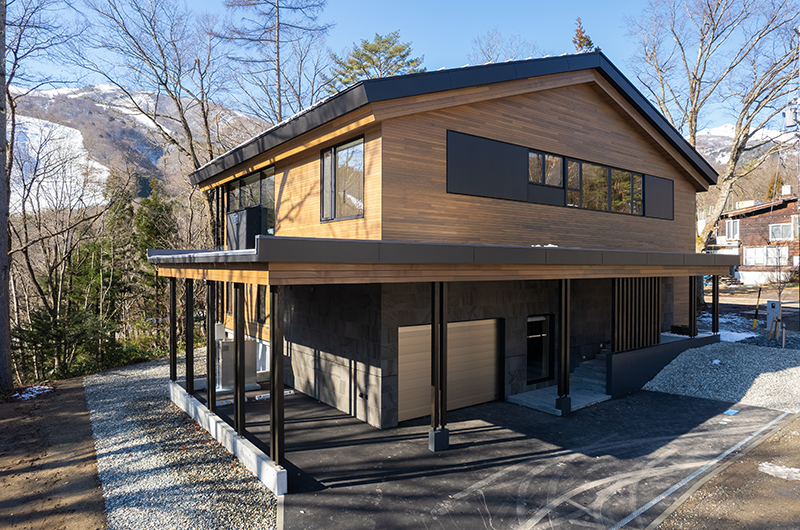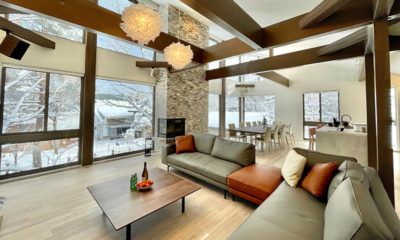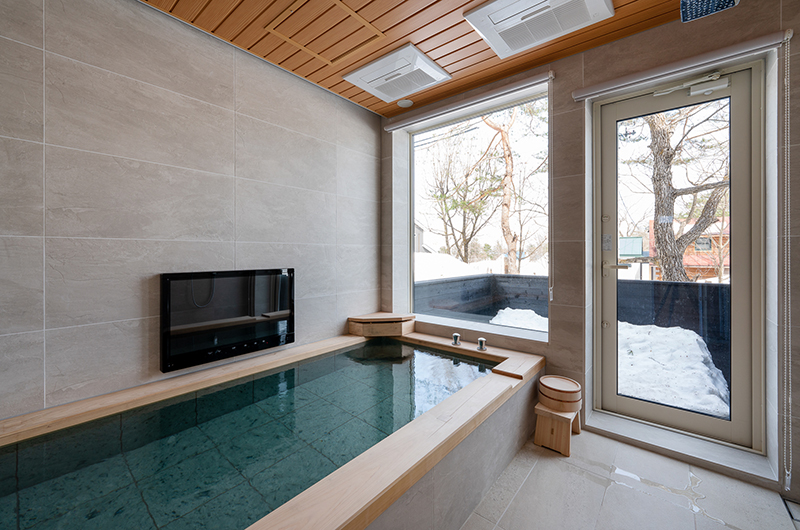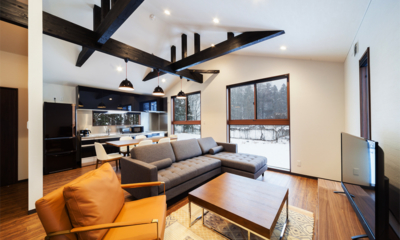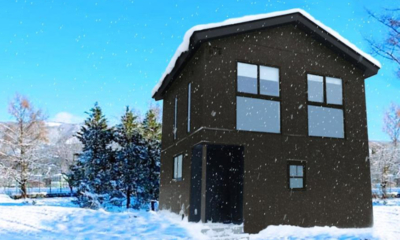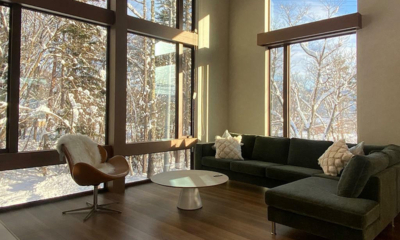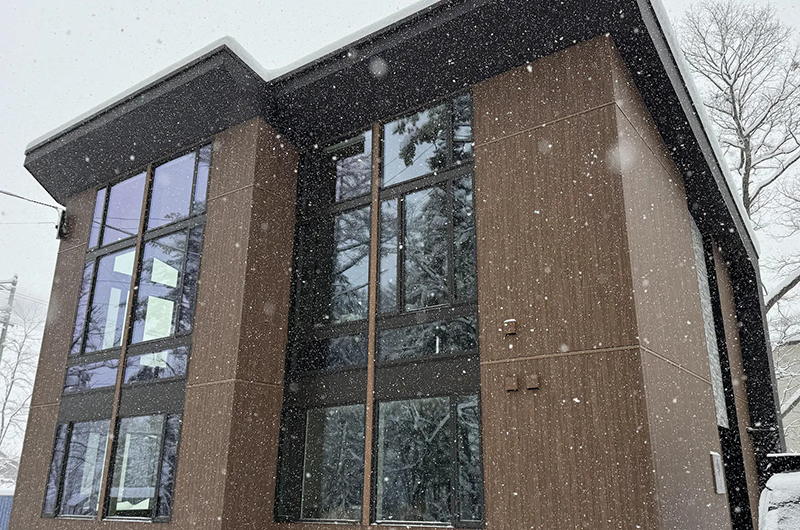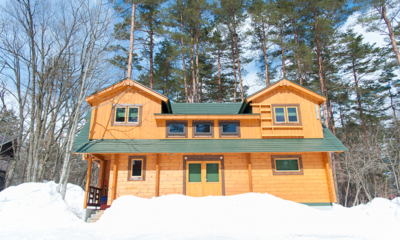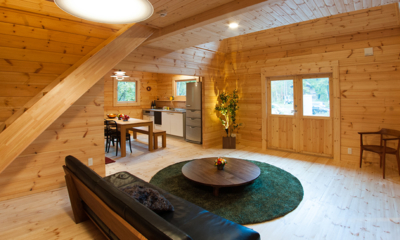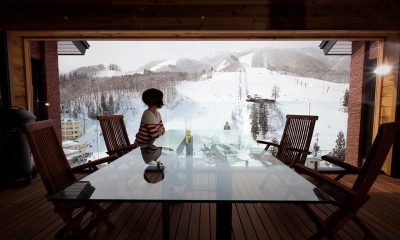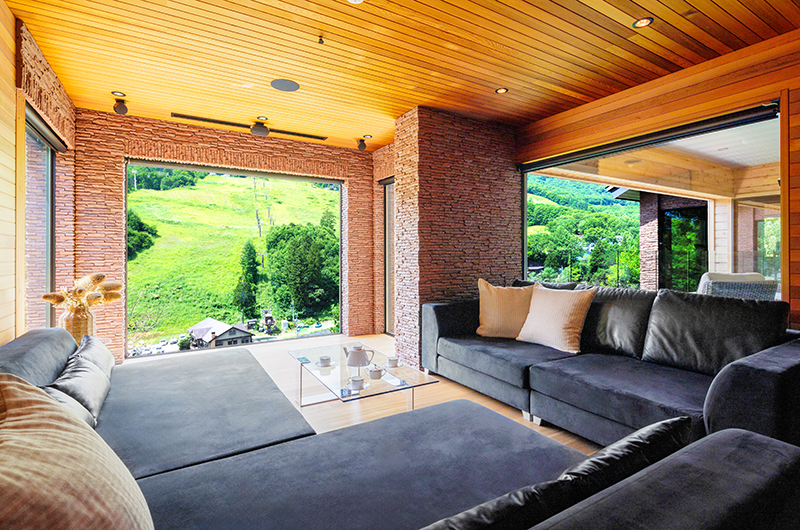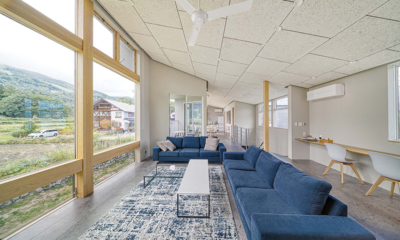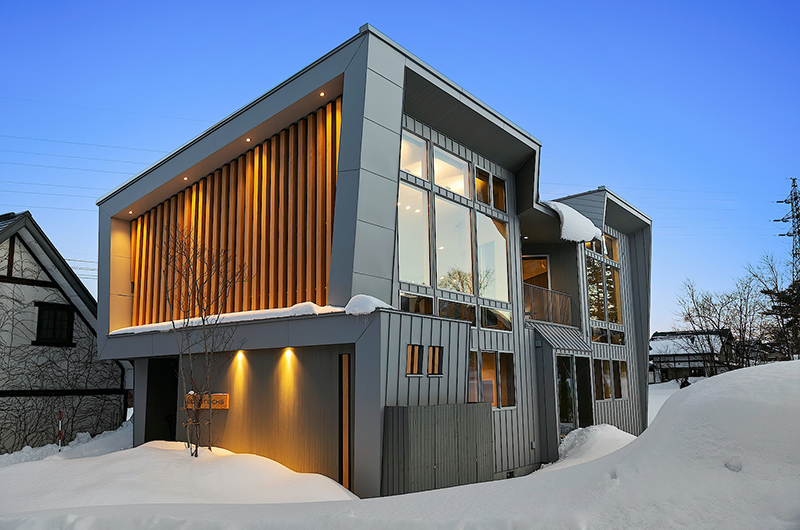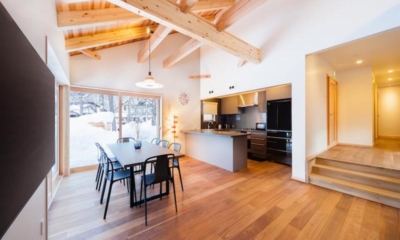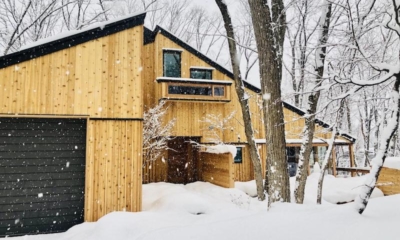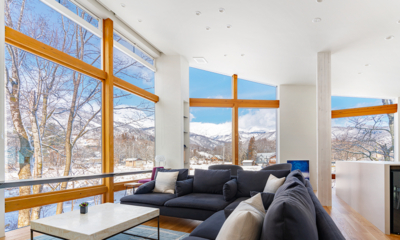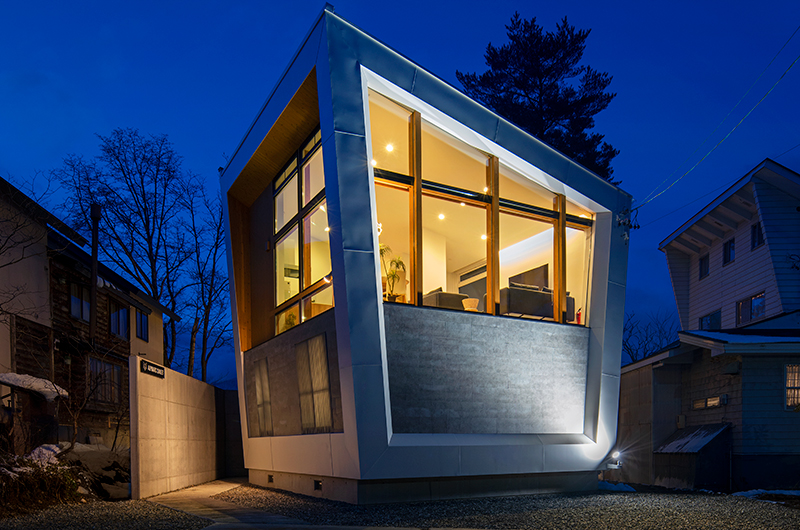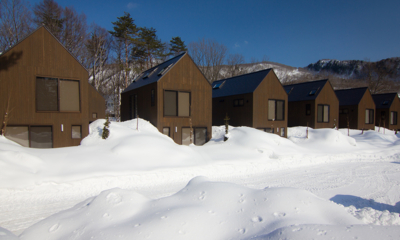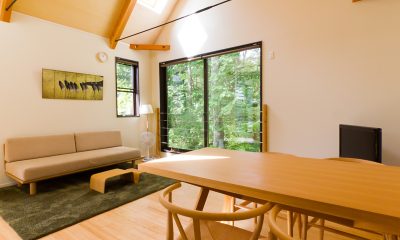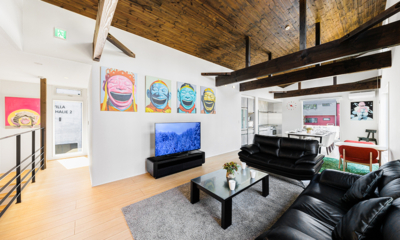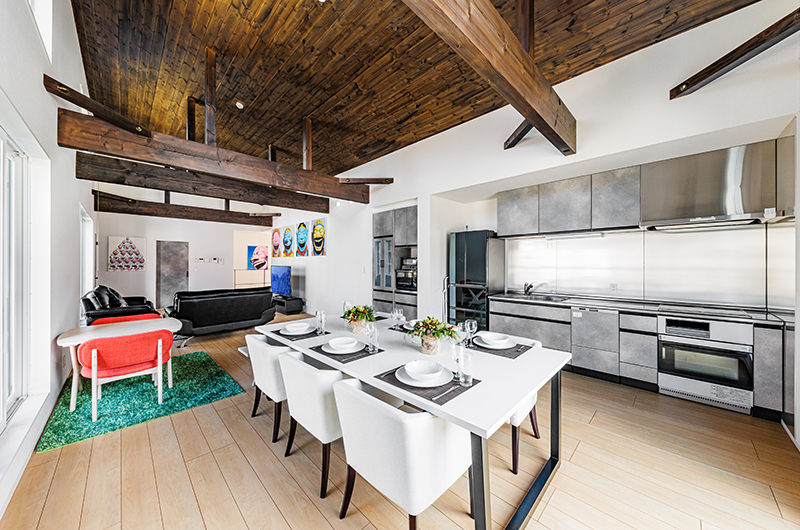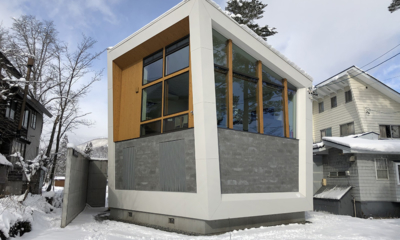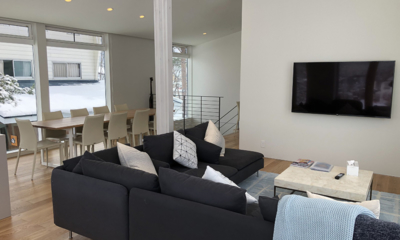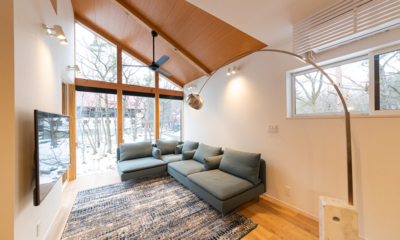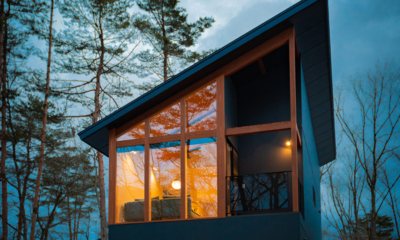With 10 resorts and over 200 ski runs to explore, Hakuba is every powder hound’s dream come true. Framed by the Japanese Alps and pristine natural landscape, the region wows in winter and stuns during summer. Having welcomed skiers for well over a century, Hakuba has grown into one of the best ski destinations in Asia. This unique locale offers a vibrant restaurant scene, fun-filled activities and fascinating landmarks – all within easy reach of Tokyo.
Overview
Hakuba is a community of 10 ski resorts clustered at the base of the Japanese Alps on Japan’s main island, Honshu. It’s astonishing that this pristine winter wonderland is located just a three-hour drive from the hectic buzz of Tokyo. Etched against a clear blue bird sky, the majestic mountain range looks like something out of a fairy-tale. Thanks to consistent powder – the annual snowfall is around 11 metres – and runs to suit skiers of all levels, it’s little wonder that avid powder hounds have been flocking here for more than 100 years. Besides attracting overseas visitors, Hakuba’s unbeatable location close to Tokyo has also made it a popular weekend escape for city dwellers.
With 10 resorts, over 200 ski runs, hundreds of restaurants and dozens of epic chalets to explore, there is always something new to discover in Hakuba. If you feel like you’ve seen it all, explore beyond the beaten path and visit Hakuba during the green season. In summer, Hakuba is bursting with colour with lush forests and immaculate golf greens stretching out as far as the eye can see, before giving way to the flaming hues of fall foliage.
History & Culture
Hakuba’s history can be traced as far back as 6,000 years – but it took a couple of millennia for this small Japanese village to become the ski mecca it is today. Skiing was first introduced in Japan at the beginning of the 20th century. During the following decades, Hakuba saw the introduction of electricity and motorised vehicles and gradually, the area gained recognition as a ski destination.
The area’s first guest houses were opened in the 1940s and the following decade saw the opening of Hakuba’s first ski lifts. During the 1980s, skiing was one of the most popular pastimes in Japan and saw a lot more people flocking to Hakuba. In 1998, Hakuba shot to the world stage as Nagano hosted the Winter Olympics with several events taking place in Hakuba. Today, Hakuba is one of the most popular ski destinations in Asia and welcomes nearly 2 million visitors every year.
Planning Your Trip to Hakuba
Hakuba comes alive during the ski season which typically spans from mid-December until mid-March. Peak season lasts from Christmas until late February – this is when all the accommodation gets booked up months in advance and when the lifts, runs and restaurants get packed. The shoulder season (early December and March-April) is a good time to visit if you’re looking to avoid the crowds and enjoy discounted prices on nearly everything, though you’re not guaranteed consistent powder. During the summer, Hakuba is a lot more quiet. Many restaurants and resort facilities close down but there are still plenty of fun activities and beautiful scenery to enjoy. Fall foliage is usually at its prettiest between mid-October and early November. Our Hakuba travel guide aims to give you the essential information, list the most popular things to do in Hakuba, provide more information on locations you want to visit, and finish with some inspiration from our travel writers.
Hakuba Weather
Hakuba has four seasons and the weather stays relatively temperate throughout the year. The ski season typically spans from mid-December until mid-March with January seeing the heaviest snowfall. There might still be some snowfall as late as April though. Hakuba is famed for its powder with an annual snowfall of about 11 metres. Even during the coldest months (January and February), the temperature rarely sinks below -15°c. During the summer (May to September), the average temperature is around 21-29°c and the landscape looks stunning all dressed up in lush greens.
Things To See & Do in Hakuba
Nestled by the Japanese Alps, Hakuba has become world famous for offering some of the best skiing and most consistent powder in Asia. With 10 ski resorts to choose from, there is something for everyone here, whether you’re a first time skier or an experienced powder hound. Though it gets a lot more quiet during summer, Hakuba is incredibly beautiful during the green season too and offers fantastic opportunity for golfing, biking, hiking and other outdoor activities.
Attractions
Hakuba Valley sits at the base of the Hida Mountains – a majestic mountain range which has aptly been dubbed the Japanese Alps. With an elevation of some 3,000 metres, the mountains provide a stunning backdrop no matter where you are in Hakuba. Beyond the mountains, Hakuba is a picturesque Japanese village that receives an energizing dose of cosmopolitan buzz during the ski season. The surrounding region also offers some fascinating landmarks and natural attractions for visitors to explore. Here, we’ll give you an overview of each resort and a few other local highlights to include in your itinerary.
SKI RESORTS
Hakuba consists of 10 ski resorts. The Hakuba Valley Day Pass provides access to lifts at all the resorts listed below.
- Happo One – The largest and most popular resort located at the heart of Hakuba.
- Hakuba 47 – Popular with families with plenty of beginner friendly runs.
- Goryu – Offering a good variety of runs, Goryu connects to Hakuba 47 through a gondola lift.
- Sanosaka – Great views of Lake Aoki and smaller crowds. Most runs are suited for beginners and intermediates.
- Kashimayari – Catering to more experienced skiers, Kashimayari is particularly popular with Japanese skiers.
- Jigatake – Great for kids and beginners with wide and gentle runs and minimal crowds.
- Iwatake – Iwatake offers great runs for beginners and intermediate skiers plus some of the best views in Hakuba.
- Tsugaike Kogen – Beginner friendly with plenty of ski schools and a variety of mellow green runs.
- Norikura – An old school resort with great powder and runs to suit all levels. Connects to Cortina through a gondola.
- Cortina – Famed for its powder, Cortina can receive double the amount of snow compared to the other resorts during the ski season.
POINTS OF INTEREST
Hakuba is surrounded by majestic landscape and fascinating landmarks. If you can tear yourself away from the slopes and the cosy comforts of your chalet, consider visiting these local landmarks:
- Jigokudani Wild Monkey Park – Home to some 200 monkeys who laze about in natural hot springs.
- Kanazawa – This historic town was a major city during the Edo period and boasts beautifully preserved architecture.
- Matsumoto – This beautiful city is home to Matsumoto Castle which dates back to the 16th century.
- Togakushi Shrine – A community of five Shinto shrines surrounded by majestic trees at the foot of Mount Togakushi.



Relaxation
After you’ve gotten your powder fix on the slopes, it’s time to let your hair down and relax. From healing onsen baths to rejuvenating massages, Hakuba offers fabulous options for rewinding in style.
ONSENS
If you’re looking for the best way to unwind after a long day on the slopes, look no further – get yourself to an onsen! These traditional hot spring baths are known for their healing qualities and they’re also incredibly relaxing. There are a handful of public onsens in Hakuba with most of them located in and around Happo One and Echoland.
MASSAGES
Another fabulous way to soothe tight muscles is to enjoy a healing massage. There are a few massage shops in Hakuba. It probably goes without saying that they specifically cater to skiers and snowboarders. Most places also offer physiotherapy.






Tours & Activities
Obviously, skiing and other snow sports are the main draw in Hakuba. There are 10 ski resorts to choose from with runs catering to beginners and advanced skiers alike. The Hakuba Valley Day Pass provides access to all 10 resorts. Alternatively, you can purchase tickets to individual resorts.
Beyond skiing, there are other amazing ways to enjoy the snow in Hakuba. You can explore the local countryside by cross-country skiing or snowshoeing or get your thrills from snowmobiling. Kids and adults alike are sure to have a blast snowtubing down the hillside. There’s also an amazing mountain view swing at the Iwatake resort.
While Hakuba is famed for its powder, the area is also stunningly beautiful during the green season. There are great trails for hiking and bicycle tours amid the mountains and lush green forests. The area also offers great golfing.
Though most people head to Niseko to experience that famous japow during the winter months, the area also offers fun activities and beautiful scenery during the summer. After the snow melts, Niseko reveals its lush green charms and outdoor enthusiasts get to enjoy activities like mountain biking, world-class golfing and fly fishing, all surrounded by pristine Hokkaido landscape.






Eating & Drinking
From handmade soba noodles to mouth-watering izakaya, it’s easy to fuel up in Hakuba after a long day on the slopes. While there are restaurants dotted throughout the ski resorts, you’ll find the highest concentration of eateries in the most popular neighbourhoods, namely Happo One and Echoland. The restaurant scene in Hakuba is pretty relaxed – think cosy izakayas, hearty pasta and burgers and bowls of steaming ramen.
Many of the local restaurants are tiny and are met with huge demand during the ski season. To secure your spot in the most sought-after venues, make sure you book your table well in advance. Also, many restaurant close down as the ski season draws to a close – something to keep in mind if you’re heading to Hakuba during the green season.
Local Cuisine
Japanese food is lauded as one of the most delicious cuisines in the world. When you’re staying in Hakuba, you’ll have unlimited access to all the classics, from sushi to yakitori and beyond. The Hakuba valley in particular is famed for its soba noodles so be sure to sample those when you’re in town. Here are just some of the local dishes you should try when you’re visiting Hakuba.
Shinshu Soba
This noodle dish is arguably the most famous meal to originate from Nagano – “Shinshu” is the historic name for Nagano. Nagano has even been called the birthplace of soba. Shinshu soba is made using buckwheat grown in Nagano’s volcanic soil. These unique conditions are said to give the noodles their irresistibly rich flavour.
Shinshu Miso Ramen
Besides soba, Nagano is famous for its miso. In fact, the region produces the most miso in the whole country. Shinshu miso ramen is a hearty noodle dish served with a miso based broth – a yummy way to warm up after a day spent out in the snow!
Sanzoku-yaki
Sanzoku-yaki or bandit’s fried chicken is Nagano’s local spin on karage – Japanese fried chicken. In sanzoku-yaki, the chicken is marinated in a delicious mix of onion, garlic and soy sauce before being deep fried. This is a very popular dish throughout the region and you’ll find it served in most izakaya pubs.
Basashi
If you’re a fan of Japanese food, you’ve probably had your fair share of sashimi – but have you ever tried the horsemeat variation? Basashi is a truly unique Nagano delicacy: thinly sliced horsemeat that’s served raw. Though it might sound like a rarity, you’ll actually find basashi served in most izakayas in Nagano.
Gyunyu Pan
Gyunyu pan or milky bread is a popular snack in Nagano. It is made up of two slices of milk based bread with a thick layer of cream in between. You can pick up gyunyu pan at most local bakeries in Hakuba or you can even find it in a convenience store – it’s that popular.



Drinking & Nightlife
During the winter season, Hakuba offers a fun and lively après-ski scene. The nightlife is centred around the Happo One and Hakuba 47 resorts, while the other resorts are a lot more quiet. The neighbourhoods of Happo One and Echoland are great for a fun night out on the town. Wadano is markedly more quiet but there are a few good restaurants tucked into this neighbourhood too. Rather than clubbing, you can expect ice cold beers, darts, live music and hearty food, be that local teppanyaki or good old fashioned pub grub. After the ski season winds down, Hakuba gets a lot more quiet and you won’t find much in the way of nightlife.



Neighbourhoods
Hakuba is located at the foot of the Hida Mountains, commonly known as the Japanese Alps. Hakuba is made up of 10 ski resorts: Happo One, Hakuba 47, Goryu, Sanosaka, Kashimayari, Jigatake, Iwatake, Tsugaike Kogen, Norikura and Cortina. There are eight neighbourhoods which are positioned at the base of these resorts: Happo One, Wadano, Echoland, Goryu, Iwatake, Tsugaike, Norikura and Cortina. The most popular areas to stay in are Happo One, Wadano and Echoland which are located at the base of the Happo One and Hakuba 47 ski resorts.
Happo One is Hakuba’s largest, most central and most popular resort which also hosted the 1998 Winter Olympics. Hakuba 47 has more beginner friendly runs, making it a popular option with families. A gondola lift connects Hakuba 47 to Goryu which offers a wide variety of terrain suitable from beginners to advanced skiers.
Sanosaka, Kashimayari and Jiigatake are located south from Hakuba 47 and Goryu. These three resorts are more quiet than the central resorts so there is plenty of space to practice on the runs and enjoy the scenery. Iwatake, Tsugaike Kogen, Norikura and Cortina are the four resorts located north of Happo One. Iwatake is known for offering some of the best views in Hakuba. Tsugaike Kogen is a great option for beginners with plenty of ski schools and green runs. Finally, the Norikura and Cortina resorts are connected through a gondola and Cortina in particular is known for offering the best powder in the region.
Hakuba Chalets
There are over 30 Ministry Approved chalets in Hakuba. Hakuba chalets range from around USD $360 per night for a two-bedroom chalet to over USD $4,500 per night for a 5-bedroom luxury chalet. Many high-end chalets come with amazing luxury facilities, including private onsens, gyms, custom ski rooms, family-friendly bunk rooms, wine cellars and more.
- Sale!
- Sale!
- Sale!
- Sale!
- Sale!
- Sale!
Practical Information
Getting There
The nearest international airports are located in Tokyo, about 300 kilometres from Hakuba. There are two airports in this metropolis: Narita (NRT) and Haneda (HND). Both are among the busiest airports in the world. Direct flights to Tokyo are available from most major cities throughout Asia, Australia, Europe and North America. Practically all major airlines fly to Tokyo. Though the nearest airports are in Tokyo, the closest city to Hakuba is Nagano which is located about 45 kilometres away.
Currently, citizens of more than 60 countries are entitled to visa free entry to Japan. This includes Australia, the US and member states of the EU. This means there is no need to apply for a visa beforehand. Your passport will be stamped on arrival, allowing you to stay in Japan for 90 days. Though most passports allow for a 90-day stay, there are exceptions so be sure to check how long you are allowed to stay in the country. If your country is not among the 60+ visa free countries, you will need to apply for a visa to travel to Japan.
AIRPORT TRANSFERS
As the nearest airports are located a good 300 kilometres from Hakuba, we strongly recommend arranging your arrival transfers prior to landing. Whether you prefer to take the bus or opt for private transfers, our concierge team can arrange this for you, taking all the hassle out of logistics.
BY TRAIN AND BUS
This is usually the fastest way of reaching Hakuba from Tokyo. Whether you’re landing at Haneda or Narita, you can take the train from the airport to Tokyo Station and then continue with the Shinkansen bullet train to Nagano. From Nagano, you can make the rest of the journey with a bus or with a private taxi. The total travel time from Haneda to Hakuba will be around 3.5 hours. From Narita to Hakuba, the travel time is about 4.5 hours.
PRIVATE AIRPORT TRANSFERS
For the most comfortable ride possible, our team can arrange private airport transfers for you and your group. This will bring you from Haneda or Narita directly to your accommodation in Hakuba in the comfort of your own private vehicle.
BY BUS
Taking the bus is the most affordable option for travelling from Tokyo to Hakuba. It is also quite straightforward as there is usually no need to switch rides along the way – but note that this is also the slowest way of reaching Hakuba. Nagano Snow Shuttle offers airport transfers from Haneda and Narita to Hakuba. The travel time from Haneda to Hakuba is about 5 hours and from Narita to Hakuba it’s about 6 hours, with a 30-minute break at the halfway point. There are three daily departures to Hakuba from each airport.
Getting Around
There are a few options for getting around Hakuba. Here, we’ve ranked them according to our recommendations for first-time travellers.
SHUTTLE BUS
Hakuba has a robust shuttle bus service that’ll take you to and from the slopes and from one resort to another. There are two types of shuttle buses: Hakuba Valley Shuttles that operate between the resorts, and individual ski resort shuttles that service a single resort (i.e. Happo, Hakuba 47 etc.). The shuttles generally operate during the ski season, roughly from December to March. The exact routes and schedules can vary from year to year. Hakuba Valley Day Pass holders can use the shuttles for free on the days they’re skiing/snowboarding.
ON FOOT
Hakuba consists of 10 ski resorts and as the area is quite spread out, walking is often not the best way of getting around. Also, a seemingly short walk might take longer than expected with bulky ski boots on. If you do decide to hoof it, remember to dress warmly. Also keep in mind that the streets can get very slippery. Remember to watch out for snow and ice falling from the roofs!
TAXI
Hopping in a taxi is an easy way for getting from point A to B in Hakuba. Taxi rates are generally quite affordable and the drivers are trustworthy. There are a few taxi companies operating in the area. Instead of trying to instruct a driver to your accommodation, it’s best to ask them to meet you at an established landmark like a convenience store or the post office. This will prevent things from getting lost in translation. Taxis can be in short supply during peak season so it pays to book a ride in advance.
RENTAL CAR
Renting a car can be a great way to explore Hakuba, whether you’re looking to hop between resorts or to do some sightseeing. However, you should only drive if you’re an experienced driver and are used to navigating icy roads. If you have never driven in snowy conditions before, we don’t recommend renting a car in Hakuba during winter. To rent a car in Japan, having a driver’s licence from your home country is not enough. You must have an international driver’s licence or obtain a Japanese driving licence.
Etiquette
While Japan is somewhat famous for its etiquette, locals tend to be very welcoming and understanding towards visitors. The local culture places great emphasis on being polite and following established customs, but no one will expect a foreigner to know all the intricacies. Hakuba is a major tourist destination and as such, has become very westernised – but visitors should still respect the local culture and its customs. There is no need to stress over strict rules and guidelines as basic decency and kindness will go a long way.
TIPPING
Tipping is not customary in Japan and might even be considered rude. Offering a tip may cause embarrassment to the recipient – a big no-no in a culture which places great emphasis on saving face.
CLOTHING
During winter, all clothing choices should be focused on one thing only: keeping you warm! Staying warm in the cold weather is very important so always prioritise functionality over fashion. Also pay attention to your footwear and choose shoes that will keep your feet warm and won’t slip on the icy roads. On the etiquette side of things, remember remove your shoes when you enter a home, chalet or hotel room. Most accommodation will have slippers handy to wear indoors.
ONSENS
Visiting an authentic onsen bath is one of the most unique experiences you can have in Japan and there are a few great public onsens in Hakuba too. While bathing in an onsen can be an incredibly relaxing experience, there are certain rules you should follow. Traditionally, you enter the water naked – no swimwear allowed! Most onsens have separate sections for men and women. To ensure hygiene and cleanliness, you should shower thoroughly before getting in the water. Never let your towel touch the water. Note that tattoos have traditionally been frowned upon in Japan so if you are sporting visible ink, perhaps reconsider visiting onsens, particularly in more rural areas. For more information, check out our guide to onsen etiquette.
Health & Safety
Japan is one of the safest countries in the world. Hakuba too is a very safe place to visit and crime is exceedingly rare. Most accidents happen due to icy roads, weather conditions and/or ignoring safety guidelines. To stay safe on the slopes, always follow the Hakuba Valley Safety Tips. The advice we provide here is a general guide only and does not replace the advice given by a medical professional.
MEDICAL CLINICS
There are a few small medical clinics in Hakuba. Shintani Clinic can assist with most sports injuries and most of the staff speaks basic English. For more serious injuries and severe illnesses, the nearest hospitals are Omachi General Hospital, Azumi Hospital and Matsumoto Hospital which are about 40 – 90 minutes away by car. If you need an ambulance, the local emergency number is 119. Medical care in Japan is of the highest international quality and can get very expensive very fast. Ensure your travel insurance covers medical expenses.
PHARMACIES
There are two chain pharmacy outlets in Hakuba: Matsumoto Kiyoshi and American Drug. You can also pick up basic pain killers and cold medicine at convenience stores.
SNOW AND ICE
Most accidents in Hakuba are due to weather conditions and/or people venturing into “no ski” zones. Always follow the Hakuba Valley Safety Tips to stay safe on the slopes. Only ski in the designated ski areas and never pass beyond any boundary ropes or signs. Ignoring safety guidelines can result in your lift pass and resort privileges being revoked. The roads can get very slippery during winter so don’t drive if you don’t have prior experience of driving in the snow. When you’re out and about walking, keep in mind the streets can get very slippery and watch out for snow and ice falling from the roofs.
THEFT
Japan has one of the lowest crime rates in the world and crimes of any kind are very rare in Hakuba as well. However, petty theft can occur anywhere in the world. To be on the safe side, take the same precautions you would in any urban area. Keep an eye on your belongings, stay aware of your surroundings and don’t leave your skis or snowboard unattended. Carry only the essentials with you and leave any valuables stored in your chalet’s safe.
Need to Know
Here’s the absolute essentials explained.
CURRENCY
Japanese yen (JPY) is the local currency and generally, cash is king in Hakuba. Many restaurants and shops will not accept cards so it’s always best to carry some yen. There are a handful of international ATMs in Hakuba. You can find them in certain convenience stores (7-Eleven and Lawson will usually have one) and at the main post office. In Japan, money is usually not passed directly from hand to hand but instead placed in a small tray at the cashier.
LANGUAGES
Japanese is the local language used in Hakuba. As the area relies heavily on tourism, English is widely spoken and understood throughout the ski resorts where many seasonal workers are native English speakers. However, once you move beyond the resort areas, Japanese reigns supreme. Even in Hakuba, you might come across situations where you’ll be met with very limited English. When taking a taxi, it’s good to have your destination and map at the ready in Japanese. Though Latin script is widely used, it also pays off to have a translation app handy to navigate signage in Japanese. Here are a few basic Japanese phrases you might need during your stay in Hakuba.
Good morning = Ohayou gozaimasu
Good afternoon / Hello = Konnichiwa
Good evening = Konbanwa
Good night = Oyasumi nasai
Thank you = Arigatou gozaimasu
You’re welcome = Dou itashimashite
How are you? = O-genki desu ka?
I’m fine = Genki desu.
Yes = Hai
No = Iie
Excuse me = Sumimasen
Sorry = Gomen nasai
1 = Ichi
2 = Ni
3 = San
4 = Shi
5 = Go
6 = Roku
7 = Shichi
8 = Hachi
9 = Ku
10 = Juu
20 = Nijuu 30 = Sanjuu
100 = Hyaku 200 = Nihyaku
Do you speak English? = Eigo wo Hanasemasu ka?
I don’t understand. = Wakarimasen.
Help! = Tasukete!
Be careful! = Ki o Tsukete!
No problem! = Kamaimasen!
POPULATION
Hakuba has a population of about 9,000 people. The village relies heavily on seasonal tourism with nearly 2 million tourists visiting the area every year. The overwhelming majority of tourists visit Hakuba during the ski season. There is a stark contrast between the busy winter months when the village is filled with international visitors and seasonal workers, compared to the quiet green season when the area feels like a quiet mountainside village.
TELECOMMUNICATION
Japan’s country code is +81. The easiest way to stay connected in Hakuba is to buy a local prepaid SIM card. To use the local mobile networks, you will need an unlocked phone which can access 3G or 4G networks. You can pre-order a local prepaid SIM card and pick it up on arrival at the airport or simply purchase one once you land. This is the easiest option as it ensures you’ll have access to mobile data right from the get go. However, you can also buy prepaid SIM cards in local convenience stores and electronic stores. Many of the restaurants and practically all accommodation in Hakuba offer free Wi-Fi. There is also free Wi-Fi in the resort areas but this can be quite slow and not that reliable.
TIME ZONE
Hakuba follows Japan Standard Time (JST), which is nine hours ahead of Greenwich Mean Time (GMT) / Universal Time.
Travel Insurance
Travel insurance is absolutely essential for every traveller. A typical travel insurance policy will have coverage for a traveller’s main concerns, including trip cancellations, medical emergencies, travel delays, and lost luggage. Most policies are built to be comprehensive to protect travellers from a variety of events that may cause financial loss before or during their trip. Some policies specifically exclude ‘dangerous activities’ so be sure to check what is covered in your policy.
Hakuba Stories
With consistent powder and stunning landscape, Hakuba has become one of Asia’s hottest ski destinations. Beyond those epic ski runs and fun winter activities, the resorts offer a vibrant restaurant scene, stunning chalets and more. Check out our latest Hakuba blog posts written by experienced Ministry of Villas travel writers.
